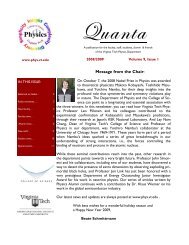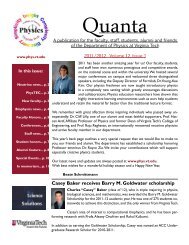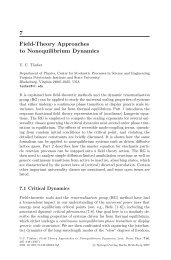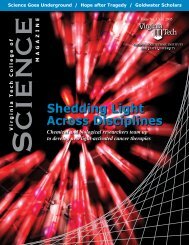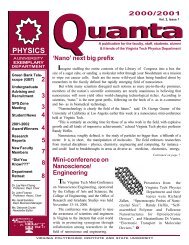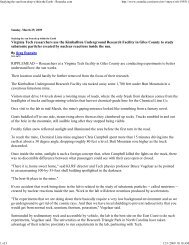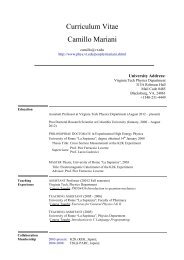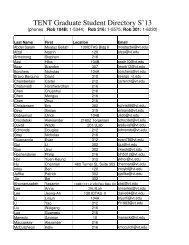CAEN V767 128 Channel Gen. Purpose MH TDC - Physics
CAEN V767 128 Channel Gen. Purpose MH TDC - Physics
CAEN V767 128 Channel Gen. Purpose MH TDC - Physics
Create successful ePaper yourself
Turn your PDF publications into a flip-book with our unique Google optimized e-Paper software.
02/07/2003 <strong>V767</strong> User's Manual – Rev.4<br />
1.2. PRINCIPLES OF OPERATION<br />
The <strong>V767</strong> operating principles are based on the functionality of the CERN/ECP-MIC<br />
<strong>TDC</strong> chip [2]. Five different module setups are selectable via software for different<br />
acquisition scenarios, namely:<br />
• Stop Trigger Matching;<br />
• Start Trigger Matching;<br />
• Start Gating;<br />
• Continuous Storage;<br />
• Common Stop Emulation.<br />
It is possible to switch from one operation setup to the other by simply resetting and<br />
reprogramming the module (with this operation the data in memory will be lost).<br />
1.2.1. STOP TRIGGER MATCHING<br />
An Event consists of the group of HIT signals that reach the enabled channels within a<br />
time window of programmable width and relative position with respect to the common<br />
TRIGGER signal. This operating setup does not foresee the use of the common START<br />
signal.<br />
0<br />
EVENT<br />
1 2 3 4 5 6 7 8 9<br />
HIT ch[0..127]<br />
0<br />
1<br />
window<br />
TRIGGER<br />
T_r<br />
Fig. 1.2: Stop Trigger Matching Sequence<br />
The stored data can be either an absolute time measurement (the zero time reference is<br />
represented by the RESET) or a relative time measurement referred to the beginning of<br />
the TRIGGER window (T_hit - T_r). The event is stored in the local buffer of the board<br />
with the following structure:<br />
HEADER event n. 0<br />
DATUM n.1 HIT time(4)<br />
DATUM n.2 HIT time(5)<br />
DATUM n.3 HIT time(6)<br />
DATUM n.4 HIT time(7)<br />
DATUM n.5 HIT time(8)<br />
EOB num. of data read = 5<br />
There is no limit to the number of words in an event. If the total rate of HIT signals is<br />
higher than the transfer rate of the data from the <strong>TDC</strong>s to the local buffer (or from the<br />
local buffer to the VME) an overflow condition will be flagged by the relevant bit in the<br />
Status Register (also by a front panel signal and LED). In this case there will be a data<br />
loss.<br />
Please refer to § 5.9 to see a simple C-like language example to operate in Stop Trigger<br />
Matching mode.<br />
NPO:<br />
00001/97:<strong>V767</strong>x.MUTx/04 Page 8 of 75



